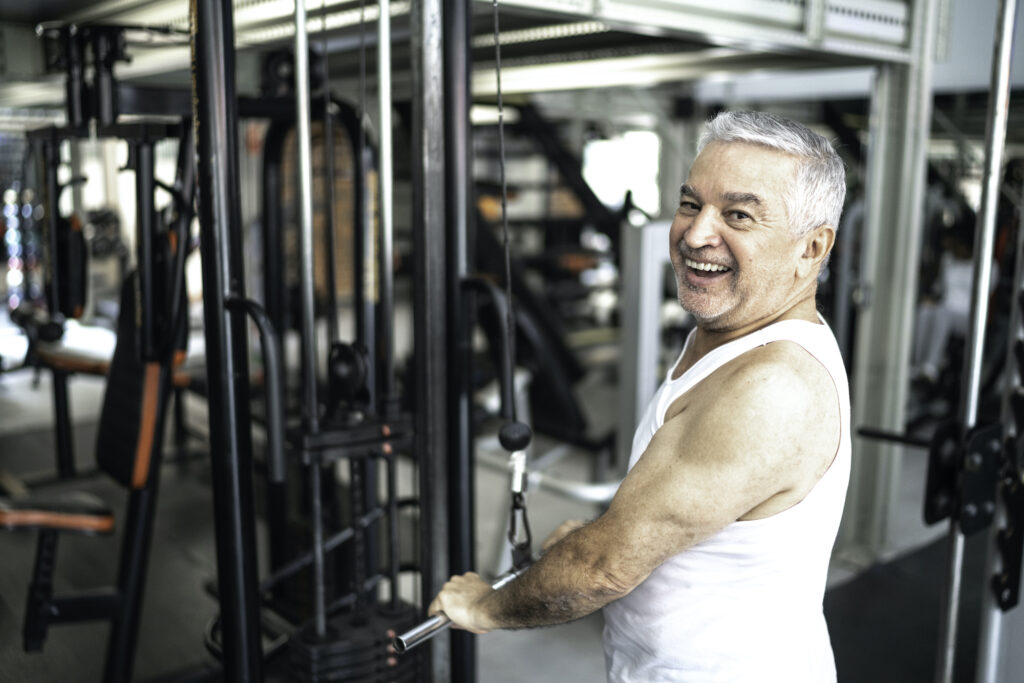Resistance training

Resistance training is a form of exercise that improves muscular strength and endurance. During a resistance workout you move your limbs against resistance, usually provided by weights, dumbbells, bands, gravity and your own body weight. Some exercise machines can also be used for resistance training.
A ‘progressive overload’ is when you gradually increase the demands placed on the musculoskeletal system in order to make gains in muscle size, strength and endurance. The most obvious way to do this is to increase the weight used. However, a lot of us have limited equipment at the moment, so here are some other ways you can progress your resistance training:
Technique
Good technique is paramount. Not only does it help keep you safe, it helps you get the most from your workouts by ensuring you are using the correct muscles and that you aren’t using momentum to help lift the weight.
Increase time under tension
Time under tension refers to the amount of time a muscle is under stress during an exercise. For example, when performing a squat, rather than completing the exercise in two seconds (one second down and one second up), complete the squat in four seconds (three seconds down and one second up). This means your muscles have to work harder.
In a set of 10 squats, if you spend just one second going down and one second coming out of the squat, you’ll spend a total of 20 seconds completing the set. If you slow down, so the downwards phase of the squat lasts three seconds, each rep will take four seconds in total and will make your set last 40 seconds. Your muscles will have worked with the same weight, but for a longer period of time.
Increase range of motion
To get the most out of your exercises, you want to get as much range of motion as your body safely allows. Usually, you can feel an exercise is more challenging when you increase the range of motion. For example, in a press up, if you lower yourself to a point where your chest is three inches from the floor it’s going to be more challenging than if you only go to a point where your chest is six inches from the floor. See the video demonstration.
Increase the difficulty of the exercise
This can be done by changing your body’s positioning (e.g. elevating your feet on a chair or step for a press-up). Pauses can also be added to help take any momentum out of a movement, making it more difficult. An example is shown in the video with a single-arm row.
More reps
Increasing the number of reps done with the same weight will also increase the demands placed on the muscles.
Type of sets
Instead of working one exercise at a time, multiple exercises can be worked together in order to place more stress on the muscles. Supersets are where we perform one exercise straight after another with no rest in between. You work the same muscle group in both exercises. For example, dumbbell chest press followed by a press up, or squats followed by a forward lunge.
Work each muscle more often
Instead of focusing workouts on specific muscle groups (legs, back, chest, shoulders etc) and only working that muscle group once per week, try splitting workouts into upper body and lower body. This way, if you do four sessions per week, each muscle group is being worked twice, increasing the overall demand placed on it.

Emma Heaton
North Locality
Gym Instructor/Personal Trainer